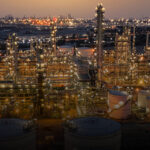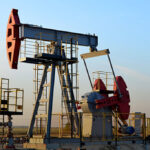Oman has long been a key player in the global oil and gas sector, with a rich history of exploration and production that dates back to the 1960s. The country’s strategic investments and comprehensive services in this industry have not only fueled its economy but also positioned it as a pivotal energy supplier. In recent years, Oman has continued to enhance its oil and gas services, contributing significantly to industry growth and economic development.

Upstream Activities: Exploration and Production
Oman’s upstream sector is a cornerstone of its oil and gas industry. This segment focuses on the exploration and production of hydrocarbons, leveraging Oman’s vast reserves. In 2022, Omani oil production reached approximately 1.064 million barrels per day, with natural gas production at over 42 billion cubic meters. The exploration activities have been bolstered by advanced technologies and extensive geological surveys, identifying new fields and optimizing extraction processes. For instance, recent exploration efforts in blocks 15, 36, and 54 have attracted significant domestic and international investment, indicating a robust future for Oman’s upstream market.
The nation’s commitment to maximizing output from existing fields and discovering new reserves is evident. For example, the Mabrouk North field in Block 10 is expected to significantly increase gas production, further cementing Oman’s role as a major energy producer. The continuous development of upstream activities not only ensures a steady supply of oil and gas but also drives economic growth through increased exports and government revenues.
The upstream sector encompassing exploration and production of hydrocarbon has remained a major growth pillar in Oman. The geographical structure of the country provides for considerable oil and gas endowment; the exploration activities have discovered new fields that have boosted the production capability. These explorations are not only about increasing the production but also about utilizing the unexplored resources through the application of modern techniques Enhanced oil recovery (EOR) techniques, such as thermal recovery and chemical flooding, have been instrumental in extracting oil from mature fields, thus extending their productive life. The Ministry of Energy and Minerals (MEM) has been active in offering new exploration blocks for auctions and has been supportive of the use of new and advanced drilling methods that has in one way or the other boosted the overall industry prospect.

Midstream and Downstream Developments
The midstream sector in Oman plays a critical role in the transportation, storage, and processing of hydrocarbons. This includes pipelines, terminals, and storage facilities that support the efficient movement of crude oil and natural gas. Oman‘s midstream infrastructure is well-developed, with pipelines connecting major fields to export terminals. The nation’s strategic location along key maritime routes enhances its capacity to serve global markets, particularly in Asia, where demand for Omani crude is strong.
Downstream activities, encompassing refining and petrochemical production, are equally vital. Oman’s refineries are equipped to handle a variety of crude types, including heavy crude, which is abundant in the region. The refining sector not only provides high-quality products for domestic consumption but also exports refined products, adding value to the country’s hydrocarbon resources. Furthermore, the growth of petrochemical industries in Oman is a testament to the nation’s commitment to diversifying its economy and reducing dependency on raw hydrocarbon exports.
Technological Innovation and Sustainability
Oman’s oil and gas industry is increasingly embracing technological innovations to enhance efficiency and sustainability. Advanced drilling techniques, such as enhanced oil recovery (EOR) and hydraulic fracturing, are being implemented to maximize extraction from mature fields. Additionally, the use of digital technologies, including real-time data analytics and automation, has streamlined operations and reduced costs.
Sustainability is another critical focus area. Oman’s commitment to environmental stewardship is reflected in its efforts to minimize the carbon footprint of oil and gas activities. This includes initiatives to reduce flaring, enhance energy efficiency, and invest in renewable energy sources. The nation’s strategic vision aims to balance economic growth with environmental sustainability, ensuring the long-term viability of its energy sector.

Economic Impact and Future Outlook
The oil and gas sector is a major contributor to Oman’s economy, accounting for a significant portion of GDP and government revenues. The sector’s expansion has driven infrastructure development, job creation, and increased foreign investment. As the global energy landscape evolves, Oman’s oil and gas industry is poised to adapt and thrive. The government’s proactive policies, coupled with a focus on innovation and sustainability, position Oman as a key player in the future energy market.

The future outlook for Oman’s oil and gas sector is promising. The country’s strategic initiatives, including the expansion of exploration activities and the development of new fields, are expected to sustain production levels and support economic growth. The upstream sector, which focuses on exploration and production, has expanded with new activities in key blocks, leading to increased crude oil and natural gas production. This sector’s growth is complemented by a well-developed midstream and downstream infrastructure, which supports the efficient transport and refining of hydrocarbons. The companies like MICO are playing vital role in the industry growth. The country’s refineries, capable of processing various crude types, not only cater to domestic needs but also enhance export capabilities. Technological innovations such as enhanced oil recovery and real-time data analytics have streamlined operations, while environmental initiatives aim to reduce the industry’s carbon footprint. The oil and gas sector remains a significant contributor to Oman’s GDP, driving infrastructure development and job creation. Looking forward, Oman’s focus on sustainability and diversification, including investments in renewable energy, positions the nation to continue playing a crucial role in the global energy market. This forward-thinking approach ensures that Oman remains competitive, balancing economic growth with environmental considerations, and securing a stable economic future.








